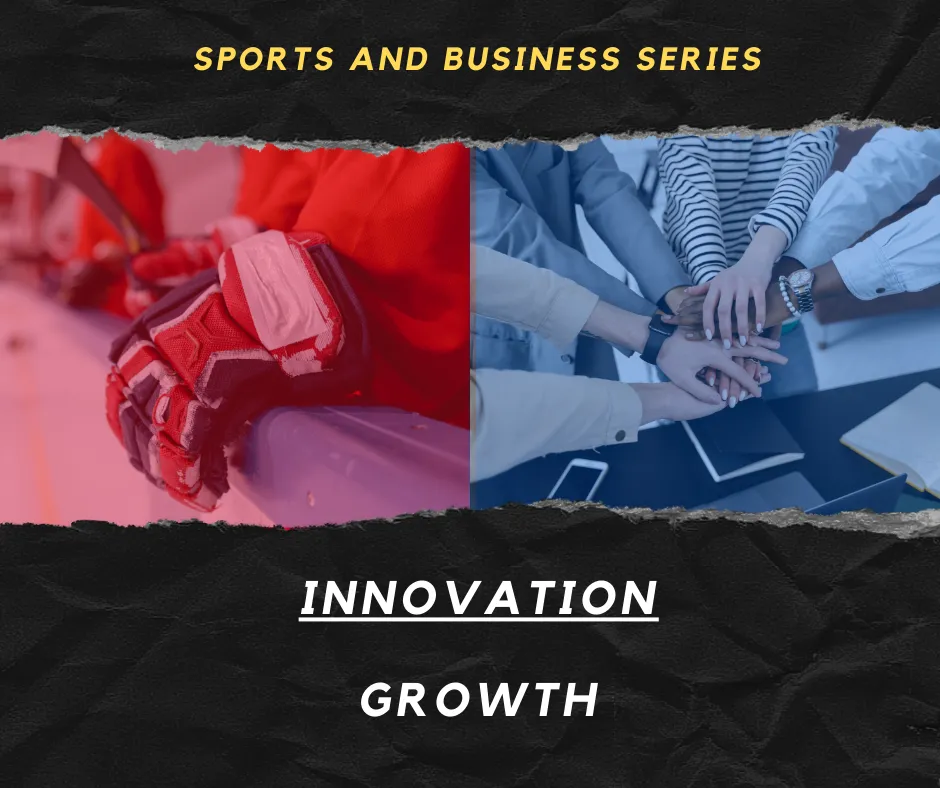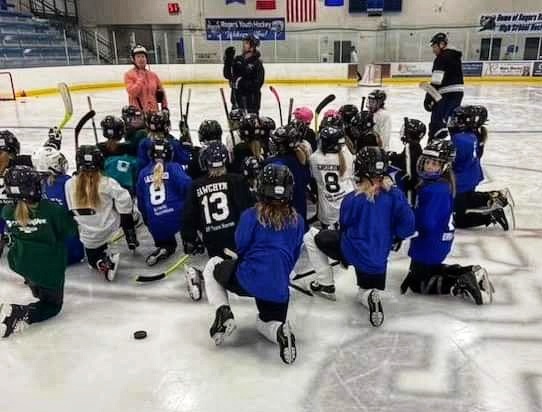
Opening Hours
Mon - Friday: 8AM - 5PM
Read More On Our Blog

Sports & Business Blog Series - Innovation - Growth
As a leader, it might be beneficial to imagine your team members as youth hockey players (or insert your favorite sport here!).
Sports:
Apart from exercise and having fun, one of the main purposes of the youth sports season is for the players to become better at the sport they signed up for.
As a youth hockey coach, it is my job to enhance each player on my teams’ abilities.
To do this, I am constantly observing the girls. I am watching them at practices, and I am watching them at games. I am looking for what they are doing well and what they are struggling with.
When they show me what they are struggling with, it helps me identify what skills we need to work on at the next practice.

When I observe a player taking a weak shot or missing a pass. I know that we need to have a shooting drill and a passing drill at the next practice plan.
I am always looking for the next steps of development, which makes sense in sports, because one of the main focuses of each season is to get better.
A parent would not be impressed if they signed their daughter up for hockey and her skill level stayed the same.
I would also feel horrible as her coach. I would feel as if I failed her.
Not only do I need to be continuously identifying what the girls are struggling with and create practice plans to address those struggles, I also need to encourage and develop a growth mindset within each player.
Without a growth mindset, the player will not allow herself to be challenged beyond her comfort zone and will not become better.
To create a growth mindset with my 7-, 8- and 9-year-old hockey players, I have conversations with them during practice.
Sometimes, after explaining a drill, I can tell that the girls are a bit terrified. They don’t know if they can handle it. They don’t know if they will be good at it.
When this happens, I remind them that I don’t expect them to be good at it the first time.
I remind them that they can do tough things. That they are stronger than they think.
Here are some of the phrases I find myself saying repeatedly:
“You are stronger than you think.”
“You can do more than you think.”
“I don’t expect you to be able to do it the first time. It is ok if you mess up.”
“I would rather have you try and fall than not try at all.”
“Great job falling and getting back up. That’s how I know you’re pushing yourself and learning.”
“You were scared at first, weren’t you? It’s ok to be scared. I get scared when I do new things too.”
“You did it. See you can do tough things.”
“You did it. Sometimes we can do more than we think.”
“You were scared, weren’t you? I could tell, but you did it anyways. That’s amazing. Way to go!”
Even though they’re youth hockey players, I don’t give them the out when trying new things that I can see scare them.
I know that they are stronger and more capable than many people give them credit for. I believe all kids can do more than we think or allow them to!
However, if we don’t set up the right situations for them to learn and develop, then they are not going to succeed.
For this reason, I make sure I am constantly challenging the girls during practices and games. AND I make sure I am supporting them and mentally training them throughout these challenges.
I’m not going to just hang them out to dry! I am not going to assume that they know everything already. Because they don’t. And it’s not because they are kids, it’s because NO ONE, adult or child, knows everything!!
Business:
Which leads me to the business side of this topic, no adult knows everything. And even adults get scared the first time they do things. It may be harder to tell, because, as adults, we’ve learned to hide our feelings better.
We’ve learned that being uncomfortable and admitting it isn’t always safe.
So as a leader, it might be beneficial to imagine your team members as youth hockey players (or insert your favorite sport here!).
We need to be observing our employees, identifying what they need to practice and giving them the space, direction and encouragement to practice those new things.
That is the only way we can ensure that our businesses are continuously growing, evolving and innovating.
If you are a leader, I encourage you to reflect on the questions below:
Am I observing my team and identifying which skills need to be practiced more?
Am I creating practice plans and scenarios to challenge my players?
Am I allowing them to be bad at a ‘drill’ the first time?
Am I supporting, directing and encouraging them through the discomfort?
Am I intentionally creating challenging situations because I know that is the only way that they will get better and grow?
Do I get frustrated with my team members for not getting it right the first time? Am I defaulting to, “They’re not smart enough. We should fire them.”? Or am I taking a step back and observing which skills they are missing and creating a practice plan to help them practice and develop those skills.
We all get better through repetition. Are you providing opportunities for repetition?
This concept is connected to the element of Innovation, because without growth and development, there is no innovation.
To learn more about the 6 Back to Basics Elements, click https://clearsimplebusiness.com/back-to-basics-index .
ARE WE A GOOD FIT FOR YOU?
There’s only one way to find out! Fill out the form below to start a conversation.
Tell us what you've got in mind and we'll be in touch to schedule a time to dig in a little deeper.
Copyright © 2021. Clear Simple Business, LLC. All Rights Reserved.

